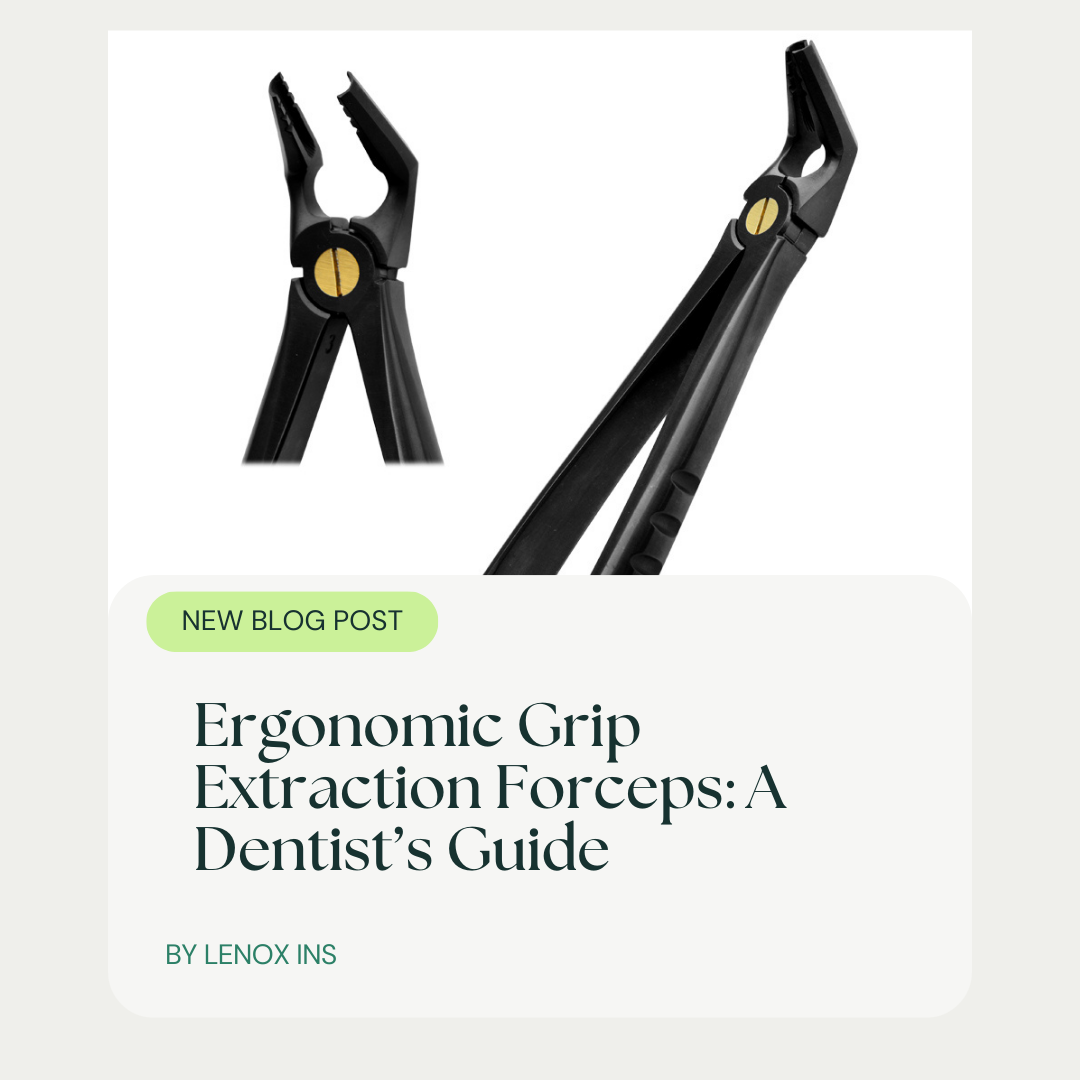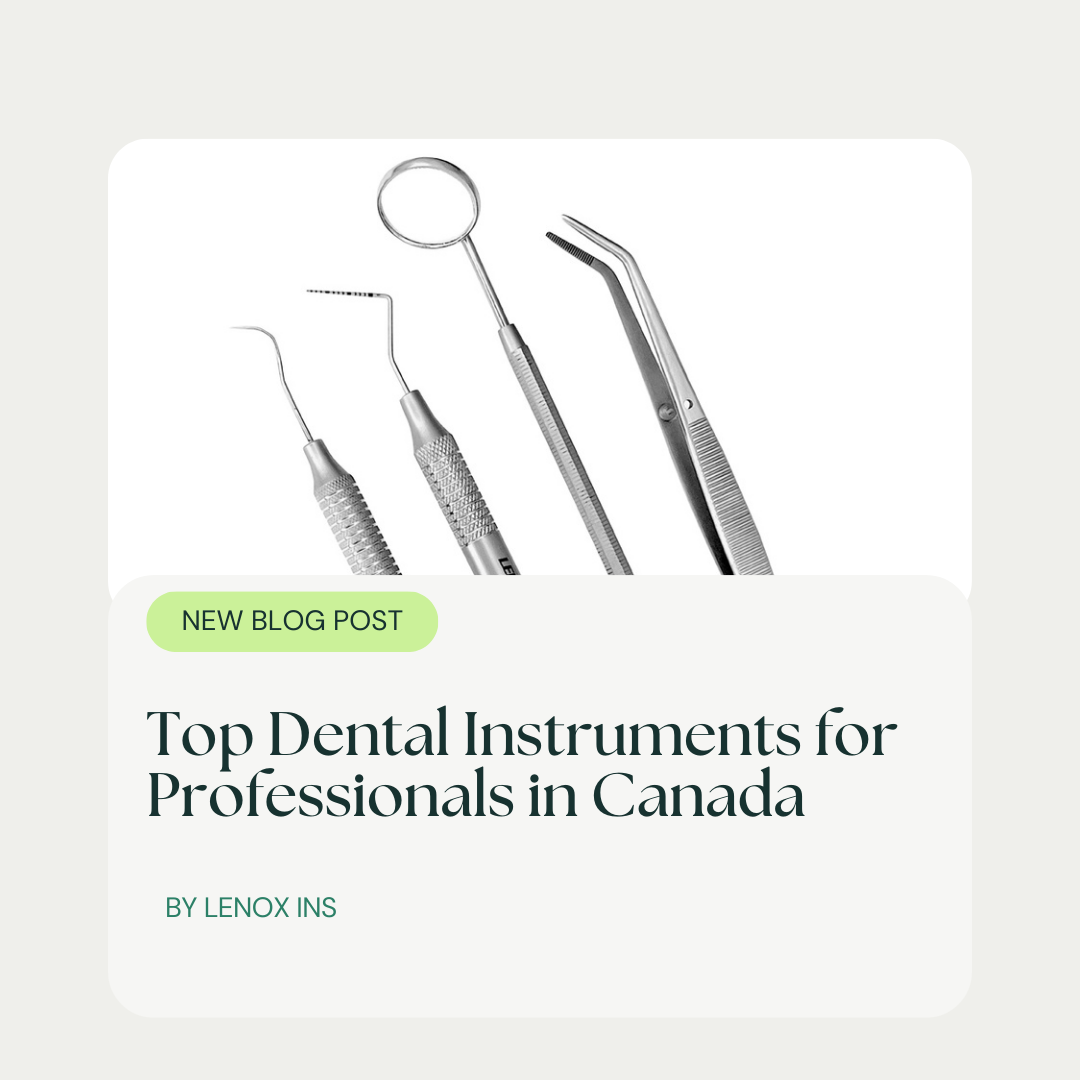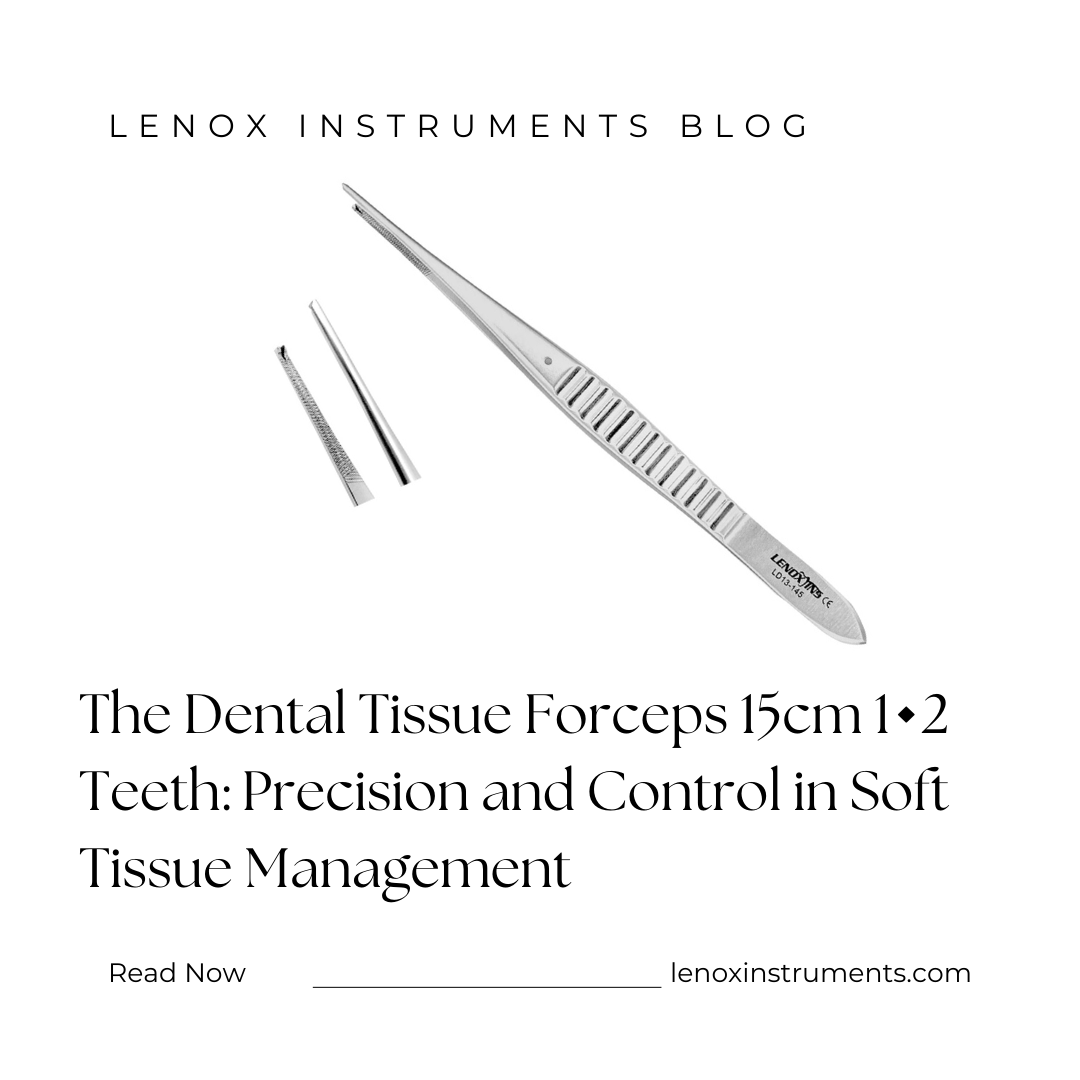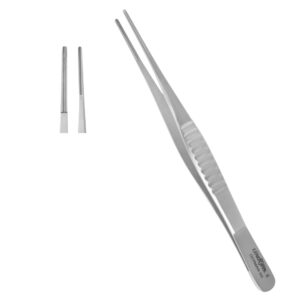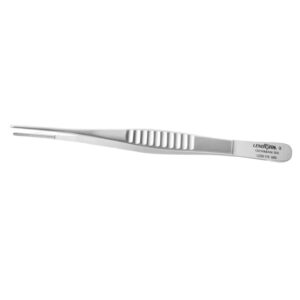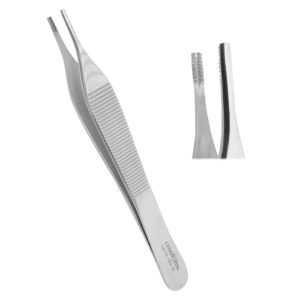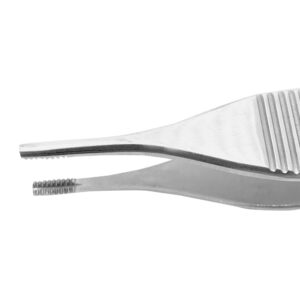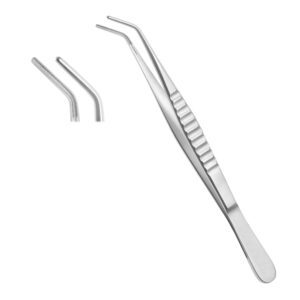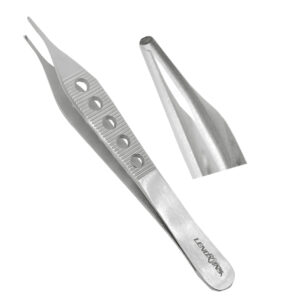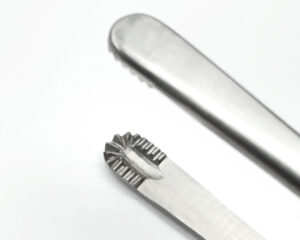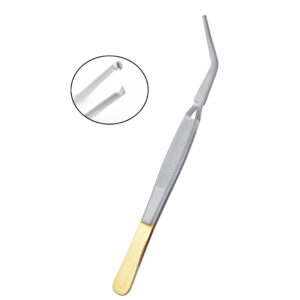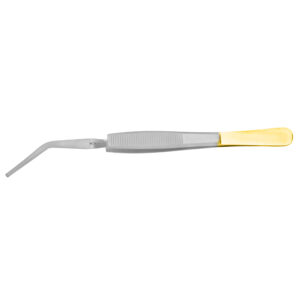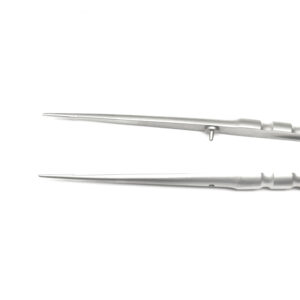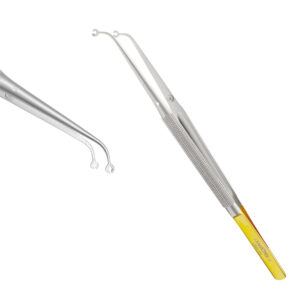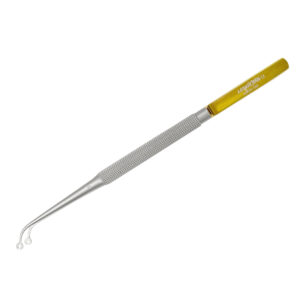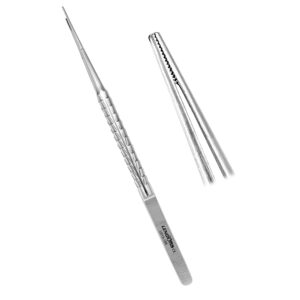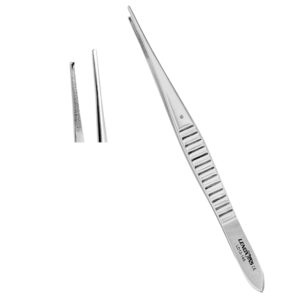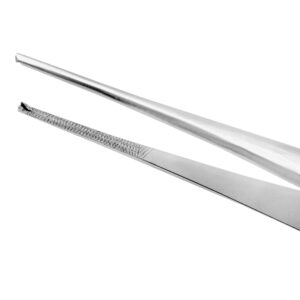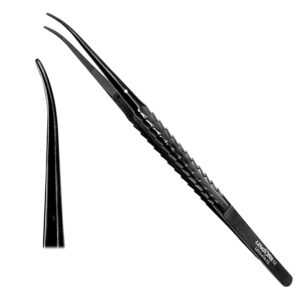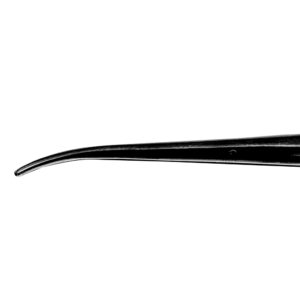Ergonomic Grip Extraction Forceps: A Dentist’s Guide
- Posted October 21, 2024
- by lenoxinstro
Table Of Contents:
Are you experiencing discomfort while using traditional extraction forceps? Ergonomic grip extraction forceps may be the solution. This guide will explore the importance of ergonomic design in dental health, tips for selecting the right forceps, and techniques to maximize their effectiveness. By understanding and employing these specialized instruments, dentists can reduce hand fatigue and improve precision during procedures, ultimately enhancing patient care. With the right ergonomic grip extraction forceps, you can transform your practice and address common challenges faced during extractions.
Key Takeaways
- Ergonomic grip extraction forceps improve comfort and precision during dental extractions
- Titanium materials enhance durability while minimizing tissue trauma during procedures
- Reduced hand strain leads to improved focus and efficiency in dental practices
- Proper maintenance is essential for the longevity and performance of extraction forceps
- Patient comfort is crucial for building trust and improving overall satisfaction in dental care
Understanding Ergonomic Grip Extraction Forceps

Ergonomic grip extraction forceps, designed with key features for comfort and efficiency, offer significant advantages over traditional stainless steel options in dental practices. These tools enhance precision during extractions, particularly in endodontics, and come in a variety of types to accommodate different extraction needs. Additionally, made from titanium, these forceps are lightweight and durable, ensuring ease of use while minimizing tissue trauma.
Key Features of Ergonomic Design
The ergonomic design of grip extraction forceps is particularly important for dental procedures involving teeth, especially during molar surgery. These forceps feature comfortable grips that reduce hand strain, allowing dentists to maintain precision and control throughout an extraction procedure. Additionally, their compatibility with autoclave sterilization ensures that these instruments remain safe and hygienic, which is crucial in maintaining patient safety.
- Comfortable grips to reduce hand strain.
- Enhanced precision during molar surgery.
- Designed for use with cannula for better visibility.
- Autoclave safe for sterilization and hygiene.
Benefits Over Traditional Forceps
Ergonomic grip extraction forceps offer several benefits over traditional options, particularly in the field of orthodontics and general dentistry. These advanced dental instruments are designed to enhance control and precision during extractions, significantly reducing the risk of trauma to surrounding tissues. For instance, the lightweight nature of titanium ergonomic forceps improves maneuverability, allowing dentists to work more effectively, especially in challenging cases involving a rongeur or complex cases where traditional forceps might fall short.
- Improved control and precision during extractions.
- Reduced risk of tissue trauma.
- Lightweight materials enhance maneuverability.
- Designed for challenging dental procedures.
Different Types for Various Extractions
Dental clinics require a range of extraction tools to address varying patient needs. Ergonomic grip extraction forceps come in several types specifically designed for different extraction scenarios, including premolar and molar extractions. Some forceps are intended for simple tooth removal, while others are equipped to work alongside specialized instruments such as curettes and tweezers, enhancing versatility in prosthodontics procedures. With options constructed from durable steel and advanced materials, these forceps ensure precise control that minimizes trauma, ultimately leading to better patient outcomes. deep gripping atraumatic extraction forceps upper premolars black gold series
Ergonomic grip extraction forceps offer more than comfort; they change the way dentists work. Understanding this is key, for ergonomics plays a crucial role in maintaining dental health for both patients and practitioners.
The Role of Ergonomics in Dental Health

Adopting ergonomic grip extraction forceps can significantly reduce hand strain for dental practitioners, enhancing comfort during procedures. These tools improve precision during dental extractions involving incisors and molars and also increase overall practice efficiency. The following sections will discuss the importance of ergonomic design in reducing fatigue, its effect on accuracy during extractions, and how it contributes to a more efficient dental practice.
Reducing Hand Strain for Practitioners
Reducing hand strain for practitioners is essential in maintaining their health and enhancing efficiency during dental procedures. Ergonomic grip extraction forceps significantly alleviate the physical burden on dentists by providing comfortable handling and better grip. This design not only minimizes fatigue but also allows for sustained precision when working on challenging tasks such as crown extractions, where control is crucial to avoid damage to surrounding tissues. By selecting high-quality Dental Surgical Forceps made from corrosion-resistant materials, dentists can ensure durability along with ergonomic benefits.
| Benefit | Description |
|---|---|
| Reduced Hand Strain | Ergonomic design allows for comfortable and secure handling. |
| Increased Precision | Better grip enhances control during crown and tooth extractions. |
| Corrosion Resistance | Durable materials ensure longevity and hygiene in practice. |
Enhancing Precision During Extractions
Enhancing precision during extractions is critical for successful dental procedures, and ergonomic grip extraction forceps contribute significantly to this goal. Designed with comfortable handles and optimal weight distribution, these forceps allow dentists to maintain a steady grip, facilitating accurate movements when removing teeth. This level of control not only minimizes the risk of damaging surrounding tissues but also promotes quicker recovery times for patients, illustrating the direct impact of ergonomics on dental health outcomes.
Impact on Overall Practice Efficiency
Ergonomic grip extraction forceps significantly improve overall practice efficiency by allowing dentists to complete procedures more swiftly and accurately. With reduced hand fatigue, practitioners maintain focus and control, leading to fewer mistakes and quicker patient turnaround times. This efficiency ultimately contributes to a smoother workflow within the dental practice, as tasks are executed with greater precision and speed.
Key factors influencing practice efficiency include:
| Factor | Description |
|---|---|
| Reduced Fatigue | Less strain on hands leads to sustained focus during procedures. |
| High Precision | Better grip minimizes mistakes, enhancing patient care. |
| Faster Procedures | Quicker extraction times improve overall workflow in the clinic. |
Good ergonomics matter. Now, let’s focus on choosing the right extraction forceps to ease the strain on your hands while ensuring patient comfort. Deep gripping atraumatic extraction forceps
Selecting the Ideal Ergonomic Grip Extraction Forceps

Selecting the ideal ergonomic grip extraction forceps involves several key considerations. Assessing clinical needs is essential to determine the right tools for specific procedures. Evaluating material quality and durability ensures that the instruments can withstand regular use without compromising performance. Comparing available brands and models helps dentists find the most suitable options, while considering patient comfort remains paramount to enhance the overall experience during extractions.
Assessing Your Clinical Needs
Assessing clinical needs is crucial in selecting the ideal ergonomic grip extraction forceps for a dental practice. Dentists should evaluate the specific types of extractions they frequently perform, such as molar or premolar extractions, to determine the necessary design and features of the forceps. By understanding the unique demands of their workflow, practitioners can choose instruments that enhance precision and comfort, ultimately improving patient outcomes and operational efficiency.
Evaluating Material Quality and Durability
When evaluating material quality and durability for ergonomic grip extraction forceps, dental practitioners should prioritize instruments made from high-grade titanium or stainless steel. These materials not only offer strength and resilience against wear but also provide corrosion resistance, ensuring a longer lifespan and maintaining hygienic standards within the practice. By selecting forceps that can withstand the rigors of frequent use without compromising performance, dentists can enhance both their efficiency and reliability during extraction procedures, ultimately benefiting patient care.
Comparing Available Brands and Models
When comparing available brands and models of ergonomic grip extraction forceps, dental practitioners should focus on reliability and user feedback. Researching professional reviews and testimonials can provide valuable insights into the performance and durability of different products. Brands that are well-regarded for their innovative designs and materials, such as titanium and high-quality stainless steel, often lead to improved comfort and efficiency during procedures, helping dentists meet their patients’ needs effectively.
Considering Patient Comfort
Considering patient comfort is a crucial aspect of selecting ergonomic grip extraction forceps. These instruments should not only enhance the dentist’s efficiency but also minimize discomfort for patients during procedures. For example, forceps designed with rounded edges and smooth surfaces can help reduce gum irritation and anxiety, allowing for a more pleasant dental experience. By prioritizing patient comfort, dental practitioners can foster trust and satisfaction, ultimately leading to better patient retention and positive outcomes in their practices.
With the right forceps in hand, a dentist finds confidence. Now, it’s time to hone those skills and learn the techniques that make each extraction precise and efficient.
Mastering Techniques With Ergonomic Forceps

Mastering techniques with ergonomic grip extraction forceps is essential for achieving successful dental extractions. Proper grip and handling are crucial for maintaining control during procedures. Step-by-step extraction procedures provide a structured approach, while tips for difficult extractions can enhance success rates. Additionally, avoiding common errors can improve outcomes and patient satisfaction. Each of these aspects contributes to effective use of ergonomic forceps in dental practices.
Proper Grip and Handling
Proper grip and handling of ergonomic grip extraction forceps is crucial for ensuring successful dental extractions. Dentists should position their fingers along the forceps‘ handles, applying gentle pressure to maintain stability and control throughout the procedure. By utilizing the textured grips of these forceps, practitioners can enhance their precision, contributing to effective tissue management and minimizing the risk of surrounding tissue damage during extractions.
Step-by-Step Extraction Procedures
To effectively perform dental extractions using ergonomic grip extraction forceps, a systematic approach is essential. First, the dentist should assess the tooth‘s condition and angle the forceps to ensure a secure grip. Careful application of controlled force while rocking the tooth back and forth aids in dislodging it, minimizing stress on both the tooth and surrounding tissues. Throughout the procedure, maintaining a stable hand position will enhance precision and reduce the risk of complications, leading to better patient outcomes.
Tips for Difficult Extractions
When facing difficult extractions, it is essential for dental practitioners to approach the procedure methodically. First, ensuring that adequate anesthesia is administered can significantly ease patient discomfort and improve cooperation. Additionally, utilizing ergonomic grip extraction forceps allows for better control and maneuverability in tight spaces, reducing the risk of damaging surrounding tissues. Following these strategies can lead to more successful outcomes during challenging extractions:
- Administer appropriate anesthesia to minimize discomfort.
- Utilize ergonomic grip forceps for enhanced control.
- Engage in a systematic approach to the extraction process.
Avoiding Common Errors
To enhance the effectiveness of ergonomic grip extraction forceps, dental practitioners must focus on avoiding common errors during extractions. One prevalent mistake involves applying excessive force, which can lead to unnecessary trauma to surrounding tissues. Instead, practitioners should emphasize controlled movements and leverage the ergonomic design of the forceps to maintain a steady grip. Additionally, ensuring proper alignment of the forceps with the tooth being extracted can significantly improve success rates, ultimately leading to better patient outcomes and less recovery time.
Using ergonomic forceps enhances precision and comfort in every procedure. To ensure these tools continue to perform well, proper maintenance and care are essential for their longevity.
Maintenance and Care for Longevity

To ensure the longevity of ergonomic grip extraction forceps, proper maintenance and care are essential. This includes implementing effective cleaning protocols after each use, following sterilization best practices, and conducting routine inspections for wear and tear. Additionally, adhering to recommended storage guidelines will help preserve the integrity of these instruments, ultimately enhancing their performance in dental procedures.
Cleaning Protocols After Use
Effective cleaning protocols for ergonomic grip extraction forceps are vital for maintaining their performance and ensuring patient safety. After each use, dental practitioners should thoroughly rinse the forceps to remove debris and biological materials, followed by a soak in a disinfectant solution to sanitize the instruments. Regular inspection for any wear or damage will also help ensure that the forceps continue to provide the precision and control needed during dental extractions.
Sterilization Best Practices
Sterilization best practices are crucial for maintaining the performance and hygiene of ergonomic grip extraction forceps. After each use, dental practitioners should clean the forceps by rinsing off any debris and then soaking them in a suitable disinfectant solution to eliminate bacteria and other pathogens. Following this, autoclaving the forceps ensures thorough sterilization, making them safe for subsequent procedures and helping to prevent cross-contamination within the dental practice.
Routine Inspections for Wear and Tear
Routine inspections for wear and tear are critical for maintaining the performance of ergonomic grip extraction forceps. Dental practitioners should regularly examine the forceps for any signs of damage or degradation, such as nicks on the tips or loosening joints. This proactive approach helps to ensure that these instruments function effectively during extractions, minimizing the risk of complications and ensuring patient safety.
Storage Recommendations
Proper storage of ergonomic grip extraction forceps is vital for preserving their functionality and ensuring longevity. Dental practitioners should keep these instruments in designated storage cases or trays that protect them from damage and contamination. Additionally, maintaining a clean and dry environment for storage helps prevent corrosion and ensures that the forceps remain in optimal condition for precise extractions during procedures.
Caring for dental instruments ensures they last longer, but true longevity begins with smart choices. Investing in ergonomic tools can reduce strain and improve efficiency—an expense that pays dividends in the long run.
Investing in Ergonomic Instruments: Cost vs. Benefit

Analyzing initial costs of ergonomic grip extraction forceps reveals considerations beyond the purchase price. Long-term savings on healthcare costs and improved patient satisfaction rates underscore their value. Additionally, investing in these instruments enhances a dental practice’s professional reputation. This section will explore these factors in detail, highlighting the important benefits of integrating ergonomic tools into everyday dental practices.
Analyzing Initial Costs
Analyzing the initial costs of ergonomic grip extraction forceps reveals that while the upfront investment may be higher than traditional options, the long-term benefits often outweigh this expense. By enhancing efficiency and reducing the risk of complications during extractions, these instruments can lead to fewer follow-up visits and decreased healthcare costs over time. Practices that prioritize ergonomic design ultimately support a healthier work environment and foster enhanced patient satisfaction, making the investment well worth it.
| Cost Aspect | Description |
|---|---|
| Upfront Investment | Higher than standard forceps but offers advanced features. |
| Long-Term Savings | Reduced follow-up visits and complications save costs. |
| Patient Satisfaction | Improved comfort and efficiency enhance patient experience. |
Long-Term Savings on Healthcare Costs
Investing in ergonomic grip extraction forceps can lead to significant long-term savings on healthcare costs associated with dental procedures. By enhancing precision and reducing the likelihood of complications, these instruments minimize the need for follow-up visits due to extraction-related issues. This not only streamlines patient care but also contributes to a more efficient practice, allowing dentists to manage their resources better and enhance overall profitability over time.
Improving Patient Satisfaction Rates
Improving patient satisfaction rates is a critical aspect of investing in ergonomic grip extraction forceps. When dental practitioners use these instruments, they can perform extractions with greater comfort and precision, significantly reducing patient anxiety and discomfort during procedures. This enhanced experience often leads to positive feedback, greater trust in the dental practice, and increased patient retention, ultimately benefiting the overall reputation of the clinic.
| Benefit | Impact on Patients |
|---|---|
| Greater Comfort | Reduces anxiety and enhances the overall experience. |
| Increased Trust | Builds long-term relationships and encourages patient loyalty. |
| Positive Feedback | Encourages recommendations and boosts practice reputation. |
Enhancing Your Professional Reputation
Investing in ergonomic grip extraction forceps can significantly enhance a dentist’s professional reputation. By utilizing high-quality instruments that prioritize comfort and efficiency, practitioners demonstrate a commitment to patient care and the overall dental experience. This dedication often results in positive patient feedback and referrals, ultimately solidifying the clinic’s standing in the community as a provider of advanced dental solutions.
Conclusion
Ergonomic grip extraction forceps are essential tools that significantly enhance the comfort and efficiency of dental procedures. By reducing hand strain and improving precision, these instruments promote better patient outcomes and streamline practice workflows. Investing in high-quality ergonomic forceps not only minimizes the risk of tissue trauma but also fosters patient satisfaction and trust. Dental practitioners should prioritize the adoption of these tools to elevate their practice and provide exceptional care.

